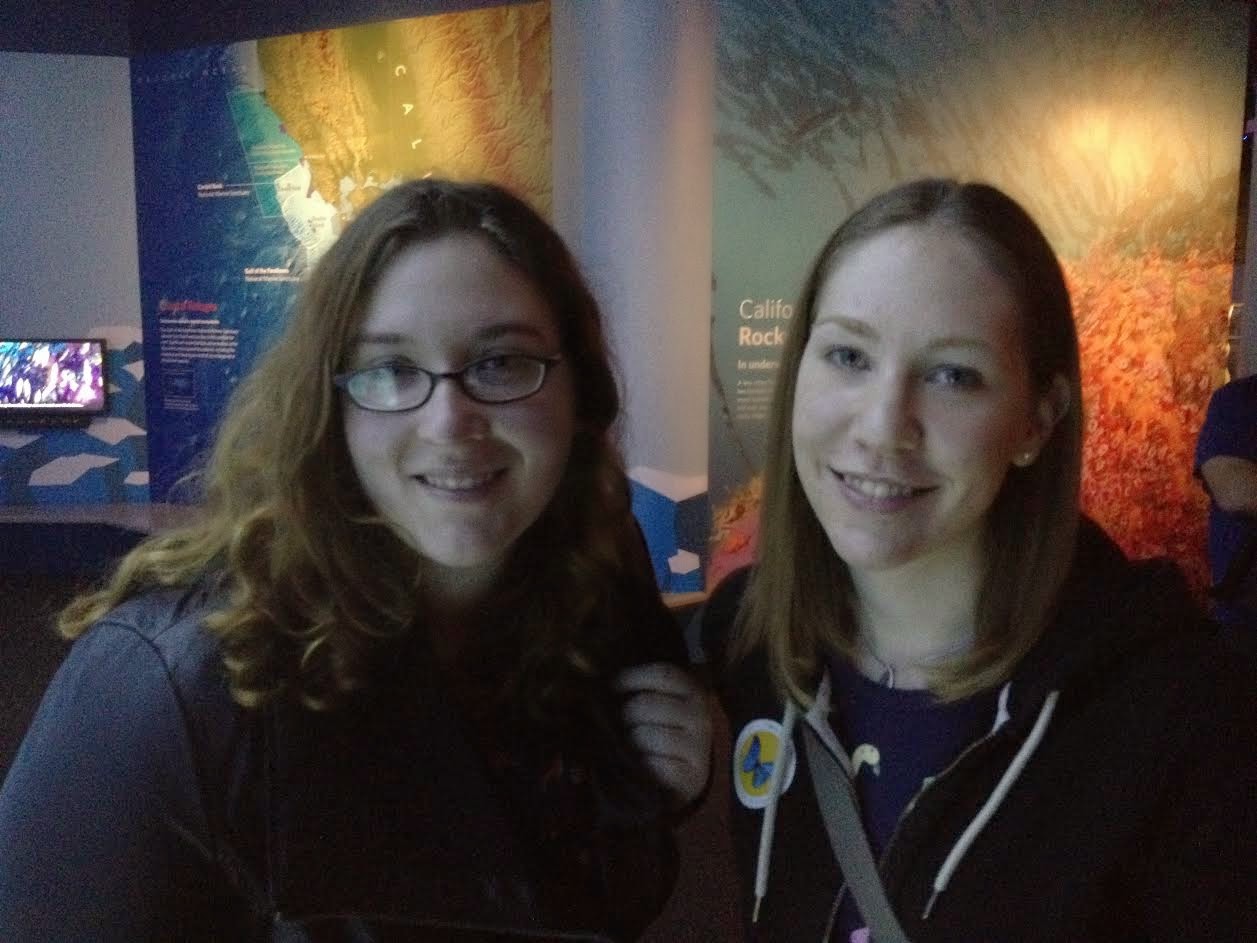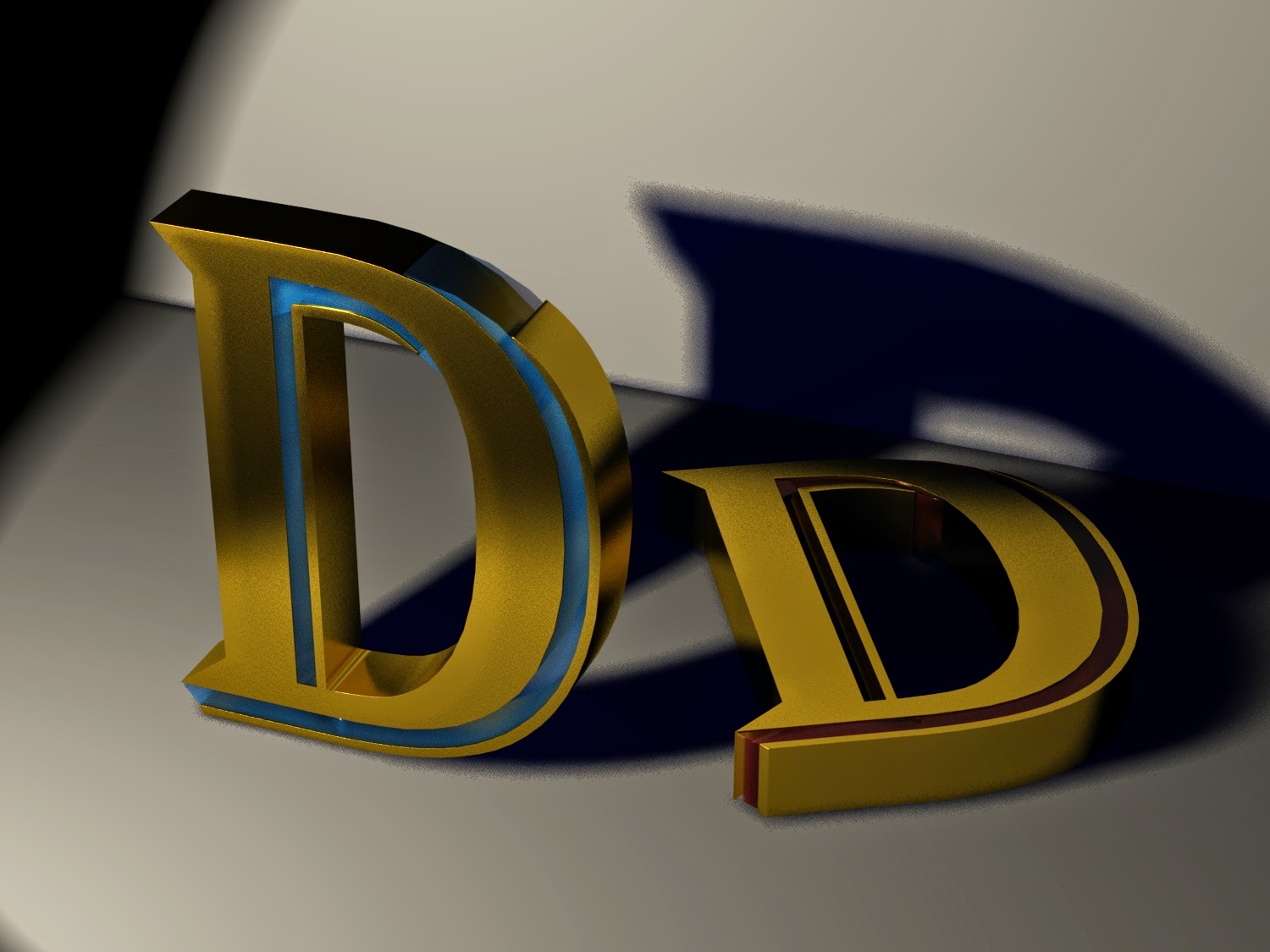I went to the Academy of Sciences on November 15th with some friends. My boyfriend renewed my membership as an early Christmas present so that's why the receipt has his name on it but the membership card has my name. I've been to the Academy of Sciences dozens of times but never saw a planetarium show until this visit. The photo is of my friend and I downstairs in the aquarium area.
PHYS123 Blog - Desiree Dixon
Thursday, December 18, 2014
Wednesday, December 3, 2014
Tuesday, November 25, 2014
Extra Credit: Lighting a Scene in Maya
One point lighting: Spotlight on the left side
Two Point Lighting: Added blue ambient light on right side
Three Point Lighting: Added spotlight rim lighting
Sunday, November 16, 2014
Special Effects in Animation and Live-Action
My first two term paper scores were 94 and 96; I will not be writing a third term paper.
Thursday, November 6, 2014
Stop-Motion Character Animation
When I bought this desk lamp years ago it reminded me of the lamps from Pixar's Luxo Jr. short film. Once I read the description for this assignment I knew I wanted to do something with the lamp; it has a lot of limitations but the various joints allow it to be fairly expressive. After I settled on an idea, I recruited Angelo for help in being a second character in the stop motion animation. I love the short film Luminaris which uses people as the stop motion characters and wanted to give it a try.
I set up a portable easel as a tripod for my ipad mini which I used to take the pictures. I animated straight ahead and repositioned the lamp and/or Angelo for every shot; positioning the lamp with my hands and positioning Angelo with my hands or verbal directions. I had to restart a few times as I figured things out. There are over 300 unique frames in the animation. I used Adobe Flash to time out the frames and export them as a movie file.
I set up a portable easel as a tripod for my ipad mini which I used to take the pictures. I animated straight ahead and repositioned the lamp and/or Angelo for every shot; positioning the lamp with my hands and positioning Angelo with my hands or verbal directions. I had to restart a few times as I figured things out. There are over 300 unique frames in the animation. I used Adobe Flash to time out the frames and export them as a movie file.
Tuesday, October 28, 2014
Science Fact or Cinematic Fiction?
The ability to bend or break the laws of physics is an essential part of an animator’s toolset. All types of animation, from two-dimensional to computer generated, can hurt or benefit from the phys-dev decisions. When the laws of physics are violated on accident due to an oversight, the believability can be broken and distract the audience from the story that the film is trying to tell. When the laws of physics are violated on purpose for reasons like making the animation feel more snappy and interesting than reality, the film benefits. One of the most noticeable laws of physics to be intentionally distorted in films is Newton’s third law. Newton’s third law of motion states that for every action there is an equal and opposite reaction. This law is often broken in animated features for various reasons. This paper will focus on three examples from three different types of animation that violate Newton’s third law on purpose for comic relief or to show the strength of the protagonist.
The two-dimensional traditionally animated Wile E. Coyote and The Road Runner cartoons from Merrie Melodies and Looney Tunes are full of excellent examples of purposeful violations of Newton's third law of motion. One scene from Beep Beep, a Wile E. Coyote and Road Runner cartoon from the 1952 Merrie Melodies series is particularly illustrative of this. The scene shows Wile E. Coyote setting up a spring-activated boxing glove attached to a large rock which he then hides behind while waiting for the road runner to show up. When he releases the spring, instead of the lighter boxing glove flying forward, the tension in the small spring pushes the big heavy rock and Wile E. Coyote violently backward into a rock wall with enough force to cause cracks in the wall. The retraction of the then stretched spring causes the boxing glove to then fly backwards and hit Wile E. Coyote in the face. The small force of the spring shouldn’t push Wile E. and the boulder backwards; it has an unequal and large opposite reaction in the wrong direction. It’s not right and it’s entirely unexpected by the audience, which is what makes it so funny. Humor is often triggered by surprising events. Even if the average viewer hasn’t studied the basic laws of physics, they know from observation and interaction with the real world what should happen when Wile E. Coyote sets up his traps for the Road Runner and can therefore be amused when the physics behave in unexpected ways.
The 2001 comedy Shaolin Soccer is a live action film that uses a lot of CGI animation special effects in order to create the fantastical scenes with super-human martial arts. Shaolin Soccer purposely violates Newton’s third law throughout the film for comedy and to make the characters in it seem stronger and more powerful than people can be in reality. A scene that clearly shows this is one in which the main protagonist, Sing, is repeatedly kicking a soccer ball at high speeds into a concrete wall with a painted-on target. As he does so he causes an indentation and cracks in the solid-looking wall. While he does move fast, he doesn’t appear to move fast enough for his kick to send the ball flying away with such a high velocity or with so much force. Forces strong enough to do that much damage to the wall should break the bones of his legs when he makes the kick, but the film-makers likely wanted to uses this scene to emphasize Sing’s super-human strength and mastery of shaolin kung fu.
Kung Fu Panda, DreamWork’s 2008 3D animated film, also has many intentional violations of Newton’s third law. The forces that the characters exert on each other and their environment don’t always seem to have equal and opposite reactions. The reactions are often over-exaggerated compared to the apparent force behind the actions. A good example is from a scene near the end of the movie when the protagonist Po the panda fights the villain of the film, a snow leopard named Tai Lung. After many unsuccessful attempts to defeat Po due to Po’s special fat panda abilities, the enraged Tai Lung charges straight at Po and ends up bouncing off his stomach and flying straight up into the air very high. Tai Lung goes so high that he disappears from view for a while. The total time he spends in the air is about twelve seconds. The magnitude of this bounce is overly extreme compared to the amount of force that went into it. Even if Po has a special ability to absorb blows or bounce things off of himself, Tai Lung doesn’t seem to have enough speed when he hits Po’s panda belly to bounce off with enough force to go so high. When Tai Lung crashes back down to the ground he creates a Tai Lung shaped crater like one might see in a Wile E. Coyote cartoon. Just like the animators in the Wile E. Coyote and The Road Runner cartoons, the people at DreamWorks wanted to bring some comic relief to the scene to soften the violence and keep the film light-hearted. An even more silly and extreme example of a reaction that is not equal and opposite to the action comes after Tai Lung climbs out of the crater in the ground. Po grabs his finger in the “Wuxi Finger Hold”, and with the flex of a small finger, destroys Tai Lung in a mass of glowing energy released by the hold. The immense amount of energy released by the finger hold doesn’t make sense and that makes it so ridiculous and funny. If DreamWorks had strictly stuck to realistic representations of the laws of physics in Kung Fu Panda, it wouldn’t have been as funny and would have felt like a very different, more serious and possibly violent film.
Even if animators are breaking the laws of physics in their films, the physics shouldn’t feel broken. It’s easy to represent the laws of physics wrong in an animation, but it’s hard to do it wrong and make it feel right. Good animations like the Wile E. Coyote and The Road Runner cartoons, Shaolin Soccer, and Kung Fu Panda can bend and break the laws of physics, like Newton’s third law, while still keeping believability within the scene. Breaking Newton’s third law helps break the seriousness. It clearly indicates to the audience that the universe that the film takes place in is not the real world and is not bound by its laws or limitations. That’s the benefit of animation; it’s not reality and is free to do things that can’t be done with a camera or traditional special effects alone. It can tell stories in ways that otherwise couldn’t be told while having the option of adding comic relief through the handing of the physics.
Subscribe to:
Comments (Atom)












